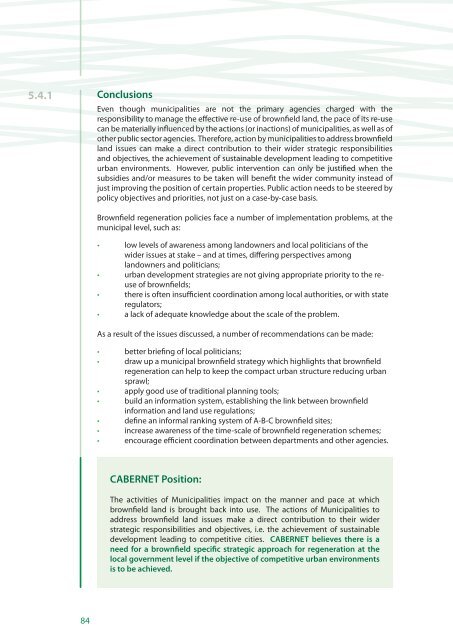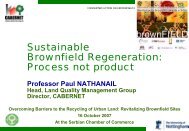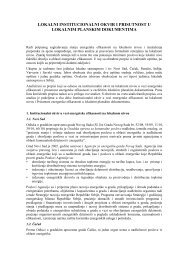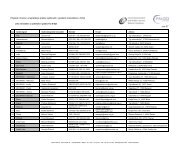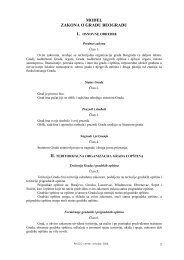Sustainable Brownfield Regeneration: CABERNET Network Report
Sustainable Brownfield Regeneration: CABERNET Network Report
Sustainable Brownfield Regeneration: CABERNET Network Report
Create successful ePaper yourself
Turn your PDF publications into a flip-book with our unique Google optimized e-Paper software.
5.4.1 ConclusionsEven though municipalities are not the primary agencies charged with theresponsibility to manage the effective re-use of brownfield land, the pace of its re-usecan be materially influenced by the actions (or inactions) of municipalities, as well as ofother public sector agencies. Therefore, action by municipalities to address brownfieldland issues can make a direct contribution to their wider strategic responsibilitiesand objectives, the achievement of sustainable development leading to competitiveurban environments. However, public intervention can only be justified when thesubsidies and/or measures to be taken will benefit the wider community instead ofjust improving the position of certain properties. Public action needs to be steered bypolicy objectives and priorities, not just on a case-by-case basis.<strong>Brownfield</strong> regeneration policies face a number of implementation problems, at themunicipal level, such as:• low levels of awareness among landowners and local politicians of thewider issues at stake – and at times, differing perspectives amonglandowners and politicians;• urban development strategies are not giving appropriate priority to the reuseof brownfields;• there is often insufficient coordination among local authorities, or with stateregulators;• a lack of adequate knowledge about the scale of the problem.As a result of the issues discussed, a number of recommendations can be made:• better briefing of local politicians;• draw up a municipal brownfield strategy which highlights that brownfieldregeneration can help to keep the compact urban structure reducing urbansprawl;• apply good use of traditional planning tools;• build an information system, establishing the link between brownfieldinformation and land use regulations;• define an informal ranking system of A-B-C brownfield sites;• increase awareness of the time-scale of brownfield regeneration schemes;• encourage efficient coordination between departments and other agencies.<strong>CABERNET</strong> Position:The activities of Municipalities impact on the manner and pace at whichbrownfield land is brought back into use. The actions of Municipalities toaddress brownfield land issues make a direct contribution to their widerstrategic responsibilities and objectives, i.e. the achievement of sustainabledevelopment leading to competitive cities. <strong>CABERNET</strong> believes there is aneed for a brownfield specific strategic approach for regeneration at thelocal government level if the objective of competitive urban environmentsis to be achieved.84


